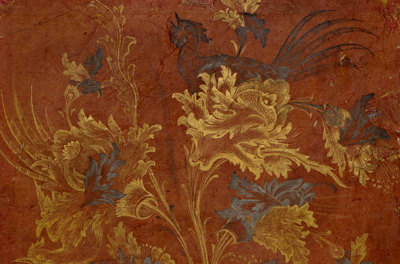Flora islamica - plantemotiver i islamisk kunst

Træer, planter og blomster
Davids Samling sætter fokus på blomster med en ny særudstilling, der illustrerer den overvældende visuelle betydning, plantemotiver har haft for kunsten i islams verden.
Træer, planter og blomster er blandt de allermest anvendte motiver i den kunst, der skabtes i den islamiske verden igennem mere end tusinde år. Mange af kunstværkerne så dagens lys i hede, tørre og golde områder. Den frodighed, der blev beskrevet i Koranens Paradis, og som vældede frem i de kunstvandede jordiske haver, var måske netop derfor ekstra tillokkende for de muslimske kunstnere.
I klassisk islamisk kultur er der – primært af religiøse årsager – en vis tilbageholdenhed over for at fremstille levende væsener og beskæftige sig med figurativ kunst. Mange kunstnere koncentrerede sig i tidens løb derfor om mere abstrakte eller stiliserede elementer, og blomster- og plante-motiver var et passende neutralt emne.
Kunsten fra islams verden er præget af en voldsom dekorations-begejstring og hengiver sig uforbeholdent og suverænt til brugen af udsmykning – ikke mindst fra planterigets mangfoldige univers. Her ser man planter eller plantebaseret ornamentik pryde alt fra helt enkle brugsgenstande til de mest kostbare luksusobjekter; fra manuskripter, døre og arkitektur til smykker, glas, keramik, tekstiler og våben. Især ét planteornament, frem for alle, er nærmest blevet synonymt med islamisk kunst – arabesken.
Udstillingen Flora islamica – plantemotiver i islamisk kunst rummer 66 genstande fra Davids Samlings islamiske afdeling samt to indlån af persiske kunstværker fra hhv. Rosenborg Slot og Designmuseum Danmark. Den og det ledsagende katalog er opdelt i ni afsnit: Den himmelske og den jordiske have, Inspiration fra Antikken, Inspiration fra Kina, Abstraktion, Arabesken, Fantasi, Naturalisme, Planten som symbol og Krudtimperiernes blomster.
Parkmuseerne – Københavns nye museumskvarter
Udstillingen åbner i anledning af lanceringen af museumskvarteret Parkmuseerne – et samarbejde mellem Davids Samling, Filmhuset, Den Hirschsprungske Samling, Rosenborg Slot, SMK og Statens Naturhistoriske Museum. Etableringen markeres med en række udstillinger og andre initiativer, der har blomster som fælles tema.
Katalog: Udstillingskatalog kan købes i museets butik. Pris 100 kr.
Omvisninger: Gratis omvisning i særudstillingen søndag, 30. juni, kl. 13, søndag, 1. september, kl. 14 og 15, onsdag, 2. oktober, kl. 19.30, lørdag, 5. oktober, kl. 14 og 15 og søndag, 27. oktober, kl. 14 og 15.
Private omvisninger kan bestilles via [email protected]. Pris 600 kr.
Film: Dokumentarprogrammet Drømmen om Paradiset – Islamisk Havekultur med arkitekt Steen Estvad Petersen vises i hele udstillingsperioden tirsdag-søndag kl. 14.00 og kl. 15.30.